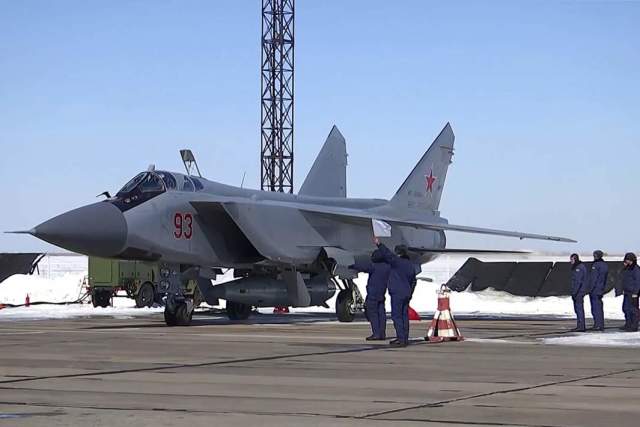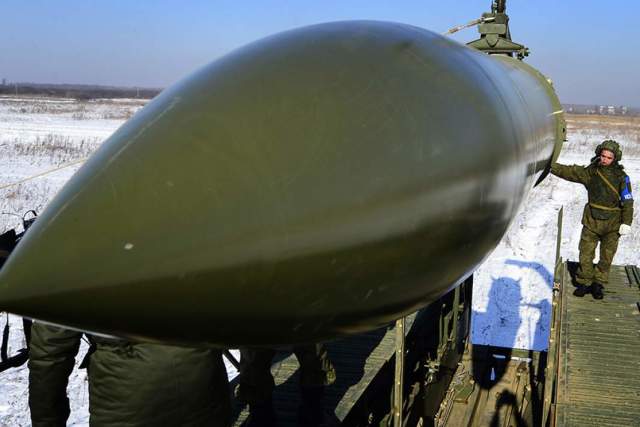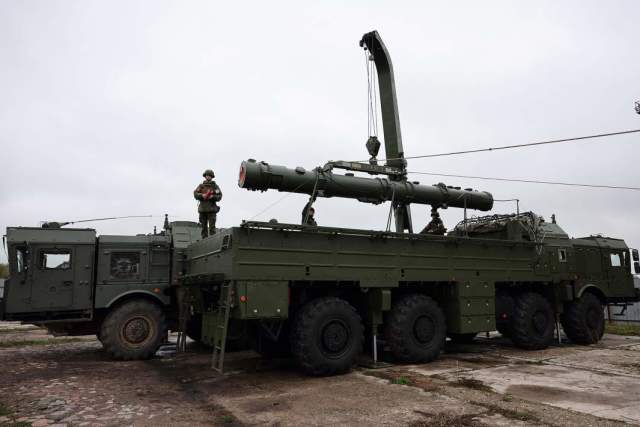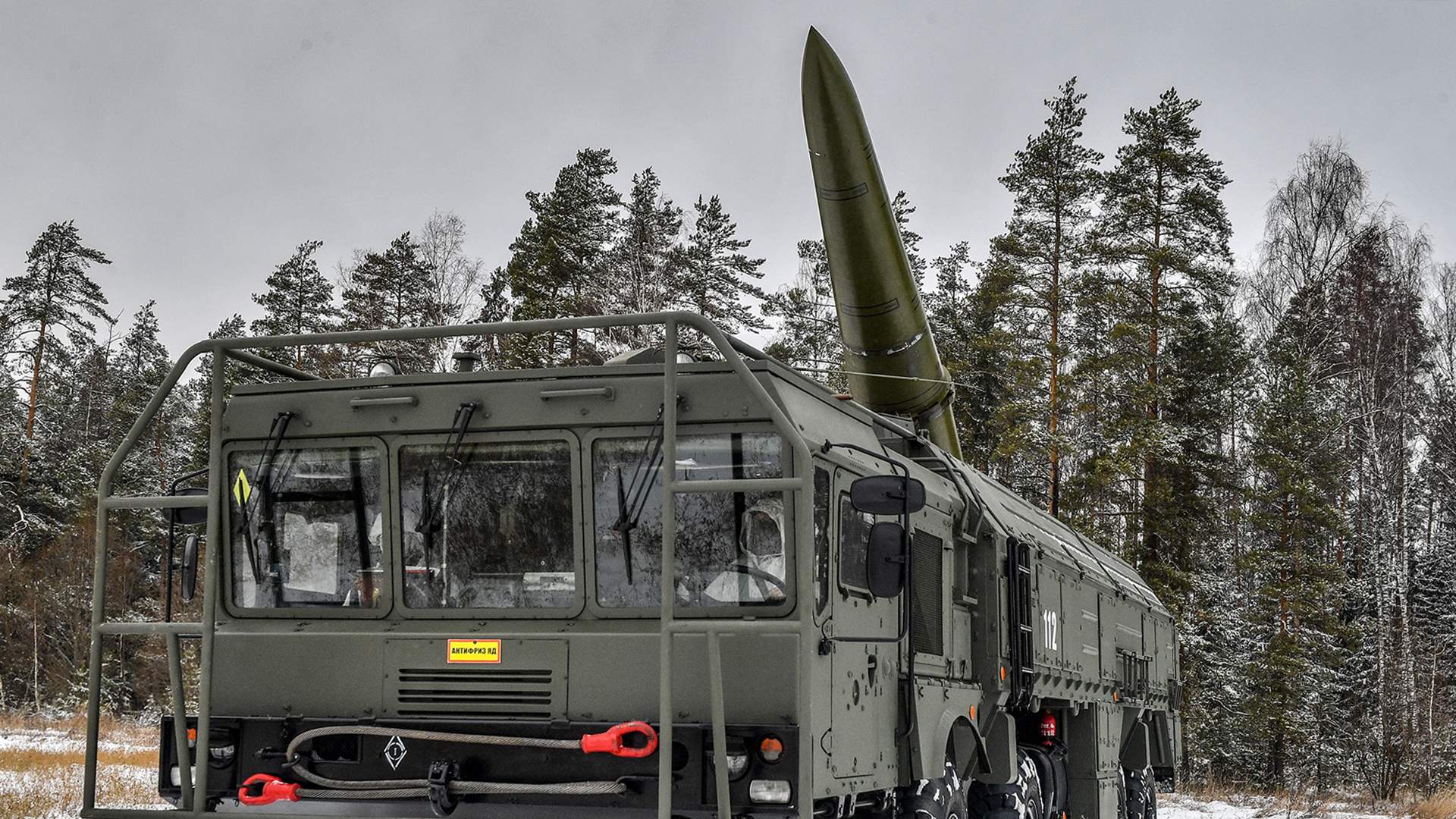Developers can increase the range and power of missiles, their ability to overcome missile defense
The Iskander and Dagger missile systems need to be finalized taking into account the experience of their use in the military — this was stated by Russian Defense Minister Sergei Shoigu, visiting the Engineering Design Bureau Corporation in Kolomna the other day. Military expert Dmitry Kornev explained the possible directions for improving this weapon specifically for Izvestia: how can its flight characteristics be improved, combat equipment changed, new capabilities given to overcome missile defense and expand the range of carrier aircraft to accommodate these missiles.
The history of the development of complexes
Operational and tactical - with a range of 150 to 500 km — the 9K720 Iskander—M Ground Forces missile system was put into service in 2006. In 2010-2011, the massive rearmament of all missile brigades of the Russian army with these systems began. In fact, it was completed by 2020.
Iskander-M carries two types of missiles that are completely different in their capabilities — the ballistic 9M723 and the cruise 9M728. They have completely different appearance, characteristics and are used for various purposes. And each one is one of the best in its class. They have a range of up to 500 km and a common 9K720 complex.
The Dagger aviation missile system is used by long-range aircraft carriers of the Russian Aerospace Forces MiG-31I and MiG-31K. It includes a hypersonic aeroballistic missile created on the basis of and using technological solutions 9M723 Iskander-M.

MiG-31 fighter jet with hypersonic aeroballistic missile of the Dagger complex
Image source: Photo: RIA Novosti/Ministry of Defense of the Russian Federation
The range of the hypersonic missile is up to 2000 km, which, taking into account the combat range of the carriers, allows hitting any targets on the European continent in a matter of minutes. The maximum flight speed reaches 10 speeds of sound, which is still a record for aviation missile systems.
For the first time, the existence of the "Dagger" was publicly announced by Russian President Vladimir Putin on March 1, 2018. Then he said that the complex had started experimental combat duty at one of the airfields of the Southern Military District since December 1, 2017. Today, the Russian Aerospace Forces already have more than two squadrons of carrier aircraft for Dagger missiles.
Both complexes are actively used in a special military operation in Ukraine. The hypersonic Dagger and 9M723 Iskander-M ballistic missiles are used for the most important protected targets — headquarters, warehouses, air defense systems, production facilities of the Ukrainian military-industrial complex. 9M728 cruise missiles are used at the locations of equipment and transport hubs, at air bases and locations of the Armed Forces.
The peculiarity of ballistic and aeroballistic missiles is that their interception is not guaranteed by modern air defense systems. Therefore, today it is an almost irresistible high—precision weapon with minimal reaction time - it can take a few minutes from receiving an order to hitting targets.

Photo: TASS/Yuri Smityuk
Image source: iz.ru
Increasing the range
How can this type of rocket, which is already considered one of the best in the world, develop and improve? There are several directions: improving flight characteristics, changing combat equipment, new carriers and new opportunities to overcome missile defense.
The range of the Iskanders was tied to the previously valid Treaty on the Limitation of Short- and Medium-range Missiles. This document established a maximum limit of 500 km for land-based missiles. Technically, taking into account the latest achievements in the field of mixed solid fuels, a new engine can be installed in the dimensions of the 9M723, which will provide the ground-based version of the missile with a range of 1000 km. While maintaining the mass of the warhead at least 500 kg. It is likely that work in this direction is already underway.
Power boost
The 9M723 and Dagger missiles are equipped with several types of combat units. The penetrating high explosive is designed to destroy fortified and protected targets. It is capable of piercing concrete floors and hitting targets under the thickness of the soil. The conventional high-explosive fragmentation warhead is inherited from the Tochka tactical missiles and has a mass of 482 kg, has an area of destruction in an open area of 1-2 hectares. It is suitable for hitting equipment and infrastructure in an open area. Cluster bombs carry 54 combat elements, which are scattered at an altitude of 900 to 1400 m and explode at an altitude of about 10 m, the affected area is hundreds of square meters.

Practical combat training launch of a hypersonic aeroballistic missile of the Dagger complex
Image source: Photo: RIA Novosti/Ministry of Defense of the Russian Federation
But there is room for development — for use in a non-nuclear conflict, a heavier warhead of increased power can be created for Iskander and Dagger missiles. It will not weigh 480 kg, but, let's say, 800 kg or even more. The range of such a heavier rocket with a new engine will be the same 500 km (in the case of a ground-based one), but the explosion power will double. This is a logical upgrade.
New media
One of the directions of development of the Dagger complex, which has already been publicly announced, is the placement of missiles on a wider range of carrier aircraft. Such could be the Tu-22M3M and Tu-160M long-range aircraft. This would allow for more massive strikes with hypersonic missiles hitting targets simultaneously and from different directions.
It will be extremely difficult for modern Western air defense systems to repel such attacks. Therefore, they can be used, for example, to destroy the air defense systems themselves. At the same time, it is technically possible to place Daggers on less high—speed carriers, but this will lead to a decrease in range - such work probably does not make sense as long as there is no shortage of carriers in Long-range Aviation.
Overcoming the PRO
Any modern missile can be shot down. The computer systems of air defense systems allow you to calculate the trajectory of even hypersonic missiles. If they move in a straight line and do not maneuver, then they can be hit by achieving the intersection of anti-missiles with them at a pre-calculated trajectory point. That's how the PRO works.
The problems begin when the target missile begins to maneuver. The 9M723 Iskander-M complex and the hypersonic Dagger have such capabilities. But in addition to everything else, these missiles can also use traps to distract the attention of anti-missiles and the entire air defense system. This technology is already in use, but it can be developed.

Loading of the launcher with cruise missiles from a transport-loading vehicle during the exercises of electronic launches of the Iskander-M operational and tactical missile systems
Image source: Photo: RIA Novosti/Vitaly Nevar
In addition, it is possible to create a smart guidance system for a group of missiles, when some of them will hit newly discovered air defense systems, and the rest will work on the main targets. Such developments have been used since the 1980s in anti-ship missile guidance algorithms — the very ones that are called "aircraft carrier killers". According to the same principle, groups of Iskanders and Daggers can attack complex targets with a defense system in a pack. The current level of technology development makes it possible to give missiles the opportunity for such an attack, and no modern missile defense system can repel it.
Of course, it is possible to create new types of nuclear warheads, and more versatile missile systems, which will include not only ballistic and cruise missiles, but also, for example, long-range missiles for hitting air or space targets. Today it probably looks almost fantastic, but tomorrow it can become a reality.
Dmitry Kornev

